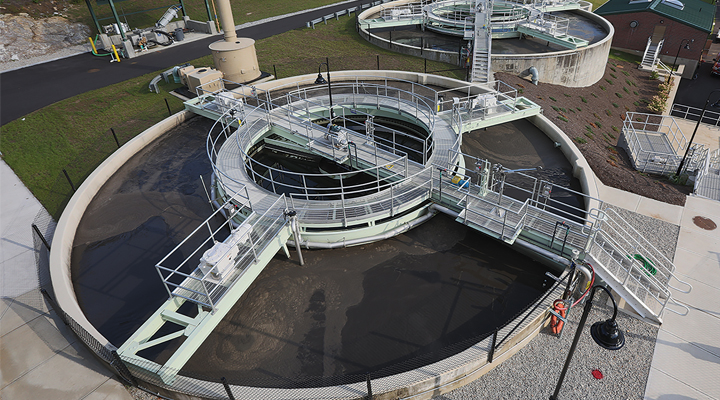Meeting tight phosphorus limits is a priority for wastewater treatment operators but finding the right technology to meet regulatory compliance, budget, and plant footprint objectives, can feel like a challenge. To help provide clarity on the subject, Casey Whittier, product manager at Evoqua Water Technologies, answers the top frequently asked questions when it comes to phosphorus management.
It is widely known that the level of phosphorus in wastewater must be reduced to protect our environment. Left untreated, it can have many negative effects on waterways. And, preventing this is a challenge that’s on the rise as our population increases. At Evoqua, we work closely with wastewater treatment plant operators to understand their specific challenges and develop innovative solutions to help solve them. The right technology will not only reduce nutrient levels, protect ecosystems, and maintain compliance with environmental regulation, it will also improve operational efficiency, and reduce maintenance.

Ballasted clarification dramatically increases biological treatment capacity, helping meet ENR limits and produces effluent quality far superior than conventional alternatives, and at lower life-cycle costs.
What effluent limits can Evoqua meet for phosphorus reduction?
Two of Evoqua’s leading technologies for phosphorus removal are the BioMag® and CoMag® systems. Both are unique ballasted clarification processes. They use magnetite – fully inert, iron ore particles – to ballast biological floc, enhance settling rates and increase the performance of wastewater and water treatment facilities by substantially reducing costs to upgrade process performance.The BioMag system is applied to activated sludge systems, providing up to 300% more treatment capacity in existing tankage and delivers faster and more reliable clarification than alternative systems. While the CoMag system uses magnetite to enhance the clarification process, settling chemical floc up to 30 times faster than conventional clarification enabling plants to increase capacity and clarifier performance. The CoMag system can achieve total phosphorus in the effluent as low as 0.04 mg/l. For the BioMag system this can be as low as 0.2mg/l. Importantly, both systems can handle variations in flow and solids.
Why does Evoqua use magnetite for phosphorus removal?
The main reasons are its performance and low environmental impact. Magnetite is an extremely effective, fast acting ballast material. It has high specific gravity of 5.2, so its weight and density (it’s 2 x denser that silica sand) make it ideal for rapid settling. It’s also readily available, fully inert, and non-abrasive when embedded in a biological or chemical floc. It also helps support a site’s sustainability goals, as with both the CoMag® and BioMag® systems we can continuously recover most of the magnetite, over 90% in fact.
I can't expand the footprint of my site, is there a solution suitable for me?
Yes. We understand that treatment facilities may have limited options available to them when it comes to improving effluent quality and increasing treatment capacity. It simply may not be viable to expand due to cost, lack of space, or planning restrictions. In this case, the answer is to innovate with the right technology and utilise existing plant assets more effectively. Both the CoMag and BioMag systems can be easily integrated into an existing tank and can manage up to triple the capacity of similar systems.
Even if space isn’t an issue, this solution has positive environmental benefits as it can save green space and avoid the carbon emissions from a new construction process.
For effective phosphorus removal, do I need a tertiary treatment stage?
This very much depends on a site’s specific profile, treatment volume, and the effluent limits you need to meet. For example, Evoqua’s BioMag system alone might be sufficient to meet expectations. If not, using the CoMag system for tertiary treatment will produce superior effluent quality at lower life cycle costs versus traditional alternatives, such as sand filtration. I suggest speaking with a trusted wastewater treatment expert who can work in partnership with you to understand your site’s unique needs and recommend a solution to meet your requirements.
I’m operating an activated sludge system, is ballasted clarification different?
With ballasted clarification, you still operate the same system, with the same operating basic control parameters. The only difference is you’re adding, recovering, and reusing magnetite in the process to enhance the activated sludge process. Through adding our BioMag® system, you improve settling across the existing secondary clarifiers, resulting in significantly better effluent quality. The BioMag system also enables operators to control the sludge blanket to not only achieve high contaminant removal but manage loads and flows.
You can take control of phosphorus removal with Evoqua’s innovative ballasted clarification technology designed to improve effluent quality. Both CoMag® and BioMag systems are cost effective, reliable, and fully automated for minimal ongoing operational requirements.
Connect with Casey Whittier on LinkedIn.

